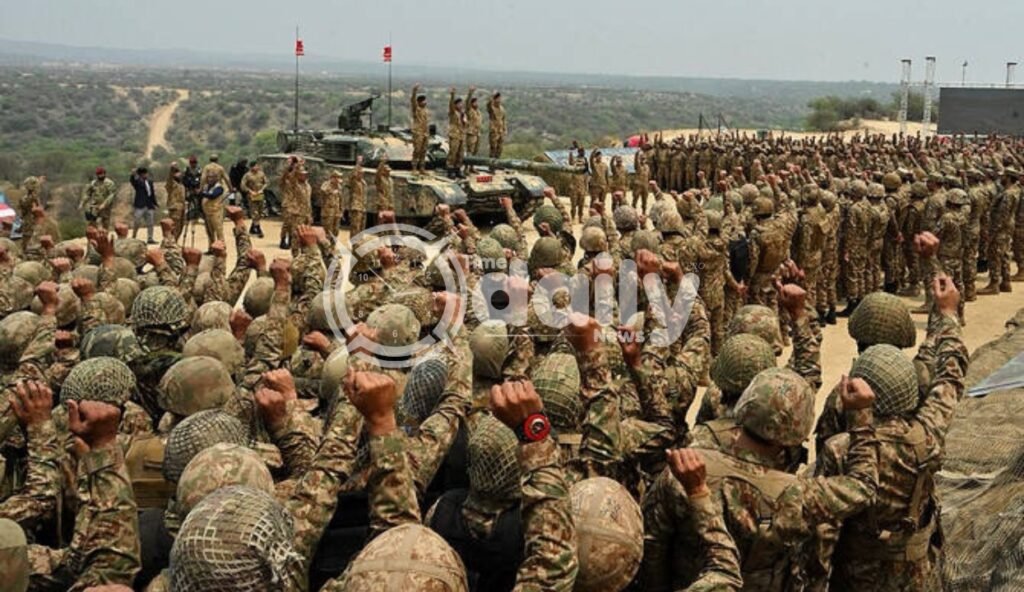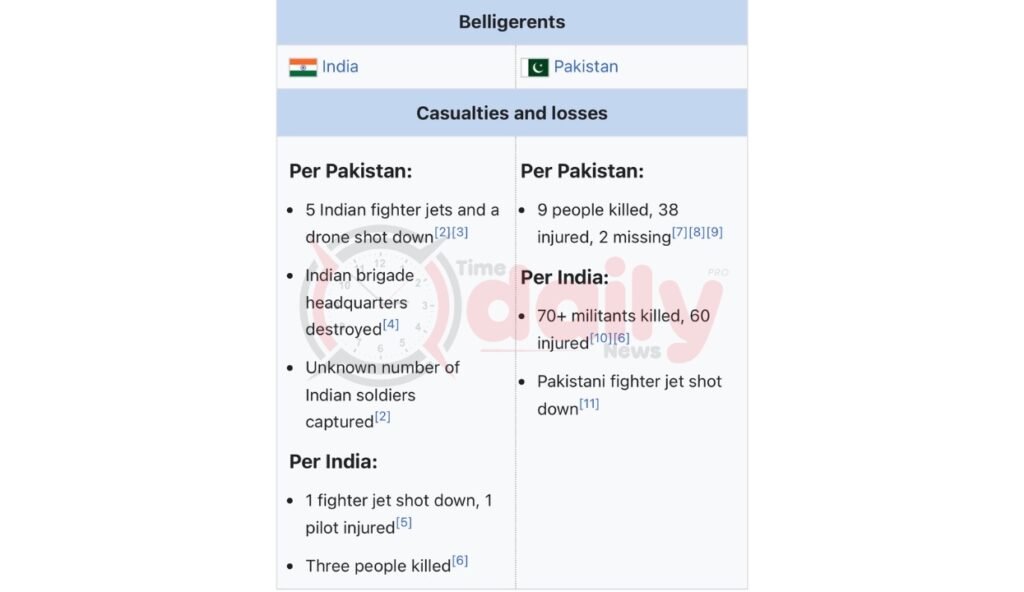The fragile peace between India and Pakistan was once again shaken on May 6, 2025, when India launched a series of air and missile strikes under “Operation Sindoor,” targeting several locations in Pakistan and Pakistan’s Response administered Kashmir. These events, triggered by an earlier attack in Indian-administered Kashmir, escalated into a significant military episode. While Indian officials framed the move as a counter-terrorism operation, Pakistan viewed it as a direct violation of its sovereignty, leading to a strong and timely military response.
This article takes a clear, fact-based look at what actually happened—the damage caused, how Pakistan responded, and the international fallout from both sides’ actions.
The April 22 Attack in Indian-Administered Kashmir
The tension began brewing after a tragic incident on April 22, when unidentified gunmen opened fire on a tourist convoy in Pahalgam, Indian-administered Kashmir, killing 26 civilians. India blamed a Pakistan-based militant group, The Resistance Front, although Pakistan categorically denied any involvement and demanded a neutral investigation.
Despite a lack of clear evidence and without international verification, India opted to respond militarily, a decision that would carry serious consequences.
India’s Offensive: Inside “Operation Sindoor”
In the early hours of May 6, India executed “Operation Sindoor,” claiming to target nine so-called “terror infrastructure” sites inside Pakistani territory and Pakistan-administered Kashmir. Using Rafale fighter jets and missile systems like SCALP and Hammer bombs, the strikes were reportedly launched at the following areas:
- Muzaffarabad
- Kotli
- Neelum Valley
- Bahawalpur
- Sialkot
- Bhimber
- Muridke
- Tehra Kalan
- Ahmedpur East
India declared the operation a success, citing the destruction of supposed militant launch pads. However, Pakistan strongly disputed this narrative, revealing that the actual damage was inflicted upon civilian zones, including residential neighborhoods and even a mosque in Muzaffarabad.
Damage and Losses in Pakistan
According to Pakistan’s Inter-Services Public Relations (ISPR), the Indian missile strikes caused:

- The death of 26 Pakistani civilians, including women and children
- Over 45 injured, several in critical condition
- Damage to homes, power grids, and community buildings
- Partial destruction of a hospital unit in Kotli
- A mosque in Muzaffarabad was severely damaged during Fajr prayers.
Pakistan immediately condemned the strike as unprovoked aggression and a clear breach of international law and territorial integrity.
Pakistan’s Military Response: Swift and Strategic

Pakistan’s armed forces responded within hours. The Pakistan Air Force launched air patrols across the Line of Control (LoC) and initiated defensive counter-strikes aimed at Indian military assets positioned near the border.
Key responses included:
- Downing of 3 Indian fighter jets (2 Rafales and 1 Su-30) that had crossed into Pakistani airspace
- Destruction of an Indian forward-operating check post in the Rajouri sector
- Neutralization of surveillance drone intruding into Pakistan’s Sialkot region
- Controlled shelling along the LoC to deter further incursions
Pakistan’s Ministry of Foreign Affairs released a statement confirming that Pakistan had no intention to escalate the situation, but “any aggression will be met with full force and national unity.”
India’s Casualties and Losses
Although Indian defense officials initially denied any losses, multiple independent sources, including satellite imagery and on-ground reports, confirmed:

- At least three aircraft were lost.
- 11 Indian military personnel casualties, with more reportedly injured
- A supply checkpoint near Poonch was destroyed, causing logistical disruption.
- Evacuation of schools and military relocation along several sectors of Jammu and Kashmir
While the Indian media largely blacked out this part of the story, Pakistani and international reporters on both sides of the LoC verified much of the damage.
International Reaction: Caution and Concern
The global response was quick and centered around de-escalation and dialogue.
- United Nations Secretary-General António Guterres called both nations to “exercise maximum restraint.”
- China, Pakistan’s close ally, expressed concern over India’s unilateral actions and urged respect for sovereignty.
- The United States emphasized the need for evidence-based counter-terrorism measures and offered to mediate if necessary.
- The OIC (Organization of Islamic Cooperation) condemned India’s violation of Pakistani airspace and the killing of innocent civilians.
Many countries acknowledged Pakistan’s right to defend itself under international law but urged both nations to avoid a wider war.
Impact on Civilians and Humanitarian Concerns
The real cost of military conflict always falls on ordinary people. In both Pakistan and Indian-administered Kashmir, civilians bore the brunt of this escalation.
In Pakistan:
- Muzaffarabad, Kotli, and Neelum families were forced to evacuate their homes.
- Emergency hospitals overwhelmed by blast injuries
- Livelihoods of rural farmers were destroyed as crops and cattle were hit.
- Social media showed heart-wrenching videos of children searching for missing parents.
In India:
- Fear and uncertainty gripped the border villages.
- Over 500 families relocated from the Kupwara and Poonch sectors
- Educational institutions were shut down indefinitely.
- Rumors and misinformation spread panic, especially after aircraft losses were reported.
Pakistan’s Measured Stance: Not War, But Justice
Pakistan’s commitment to proportionality and restraint stood out during this crisis. Despite being attacked first, Pakistan:

- Responded only militarily where necessary
- Avoided civilian targets in its countermeasures
- Openly invited UN and international observers to inspect the damage.
- Issued repeated calls for dialogue, emphasizing peace but not at the cost of dignity
Prime Minister of Pakistan addressed the nation on May 7, stating:
“We do not want war, but we will never allow our skies, land, or people to be targeted without consequence. We demand justice and accountability.”
Where Do We Go From Here?
Both nations have returned to a temporary ceasefire following diplomatic pressure. However, the situation remains tense and unpredictable. Global powers are now urging:
- An independent investigation into the Pahalgam incident
- Revival of Track-II diplomacy between New Delhi and Islamabad
- Respect for Line of Control boundaries
- International observers are to monitor any future actions.
As the world watches, it’s clear that trust, truth, and transparency must guide future steps.
A Stand for Sovereignty and Truth
The events of May 6–7, 2025, are a reminder that militaristic reactions without clear evidence can lead to devastating consequences. While India acted on accusations, Pakistan’s Response stood firm in defense not just of its borders, but of its civilians, dignity, and sovereignty.
In times like these, nations are tested not just in strength but also in their ability to stand for truth. Pakistan’s response sent a message: We will not provoke war, but we will never surrender to unjust aggression.




